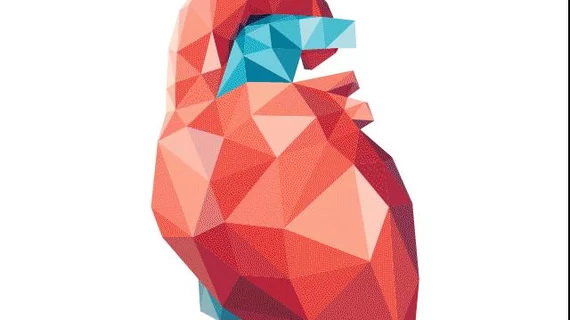Deep learning, SPECT-MPI forecast obstructive CAD
SPECT myocardial perfusion imaging (MPI) and deep learning have proven to be a powerful pair in predicting obstructive coronary artery disease (CAD) and improving the interpretation of upright and supine images, according to research published Sept. 27 in the Journal of Nuclear Medicine.
“Deep learning improves automatic prediction of obstructive coronary artery disease from MPI, as compared to the current standard quantitative method,” wrote lead author Julian Betancur, PhD, of Cedars-Sinai Medical Center in Los Angeles, and colleagues.
The study analyzed stress MPI images from 1,160 patients (64 percent males) from the National Institutes of Health-sponsored Registry of Fast Myocardial Perfusion Imaging with Next generation SPECT (REFINE-SPECT) who underwent upright and supine SPECT MPI in four U.S. nuclear cardiology centers between 2008 and 2015.
The registry includes MPI studies and on-site clinical reads of consecutive patients with no known CAD who underwent clinically indicated invasive coronary angiography (ICA) within 180 days of MPI. The researchers applied deep learning to upright and supine images with correlating ICA to improve the interpretation. Physicians reviewed the two images for final interpretation.
The research team observed that deep learning from upright and supine polar MPI images outperformed the standard clinical combined total perfusion deficit (cTPD) in the prediction of obstructive disease. The observed gains for predicting CAD were greater than those obtained by attenuation-corrected TPD or visual analysis of attenuation-corrected SPECT MPI images.
“These gains by deep learning derive from an improved processing of the same information used by cTPD with no additional testing, radiation or cost,” Betancur et al. wrote. “... Deep learning matched the sensitivity/specificity of disease prediction by clinical expert reading, even though on-site reader experts made their diagnosis with all imaging data (including rest scans and gated scans) as well as patient’s clinical information, all unknown by deep learning and cTPD.”
The researchers noted that the method could someday be extended for the simultaneous analysis of prone and supine images, or attenuation-corrected and non-attenuation corrected images. The technique could also be a positive for physicians as it does not require them to enter clinical information. In addition, the predicted per-vessel probabilities of obstructive CAD could be integrated with quantitative software in the form of polar maps to aid the clinician in final reporting.

